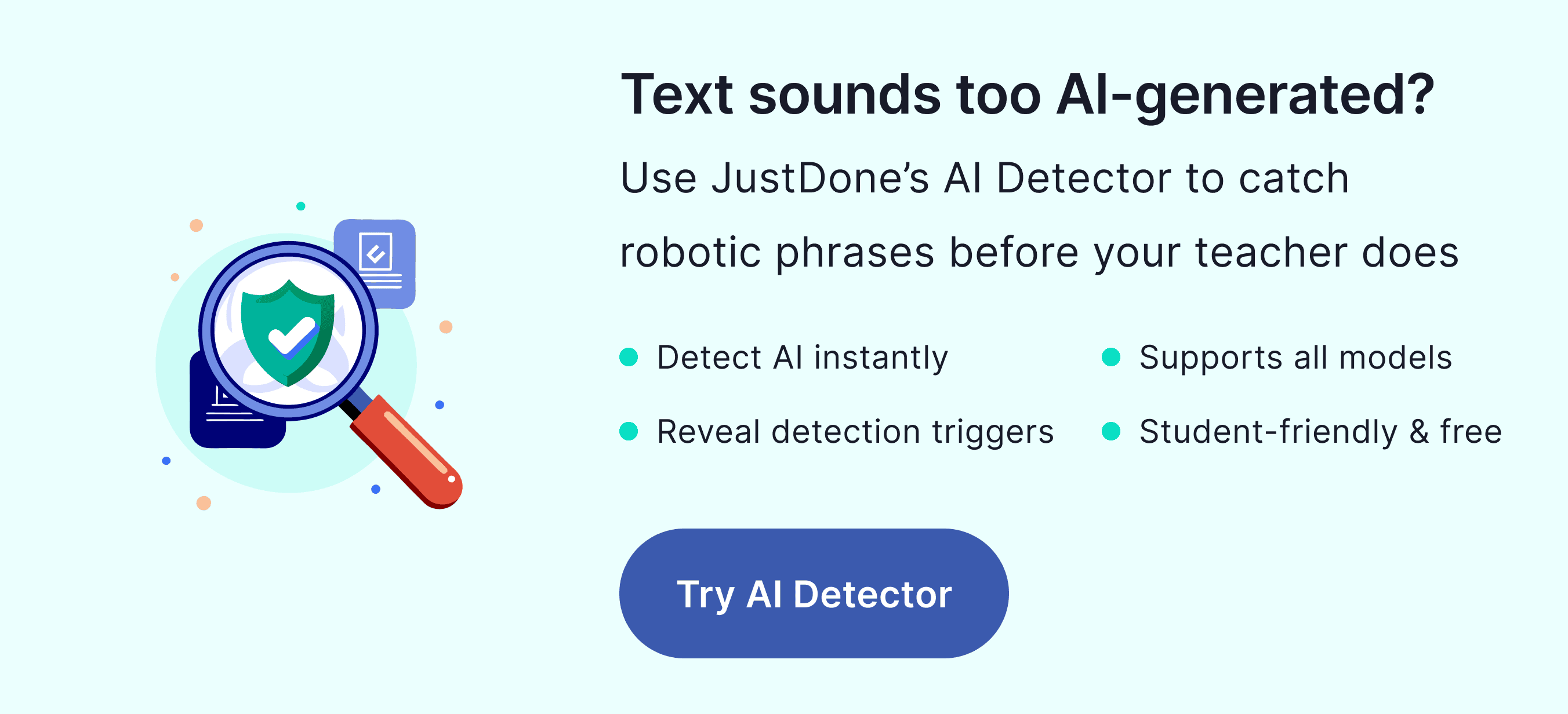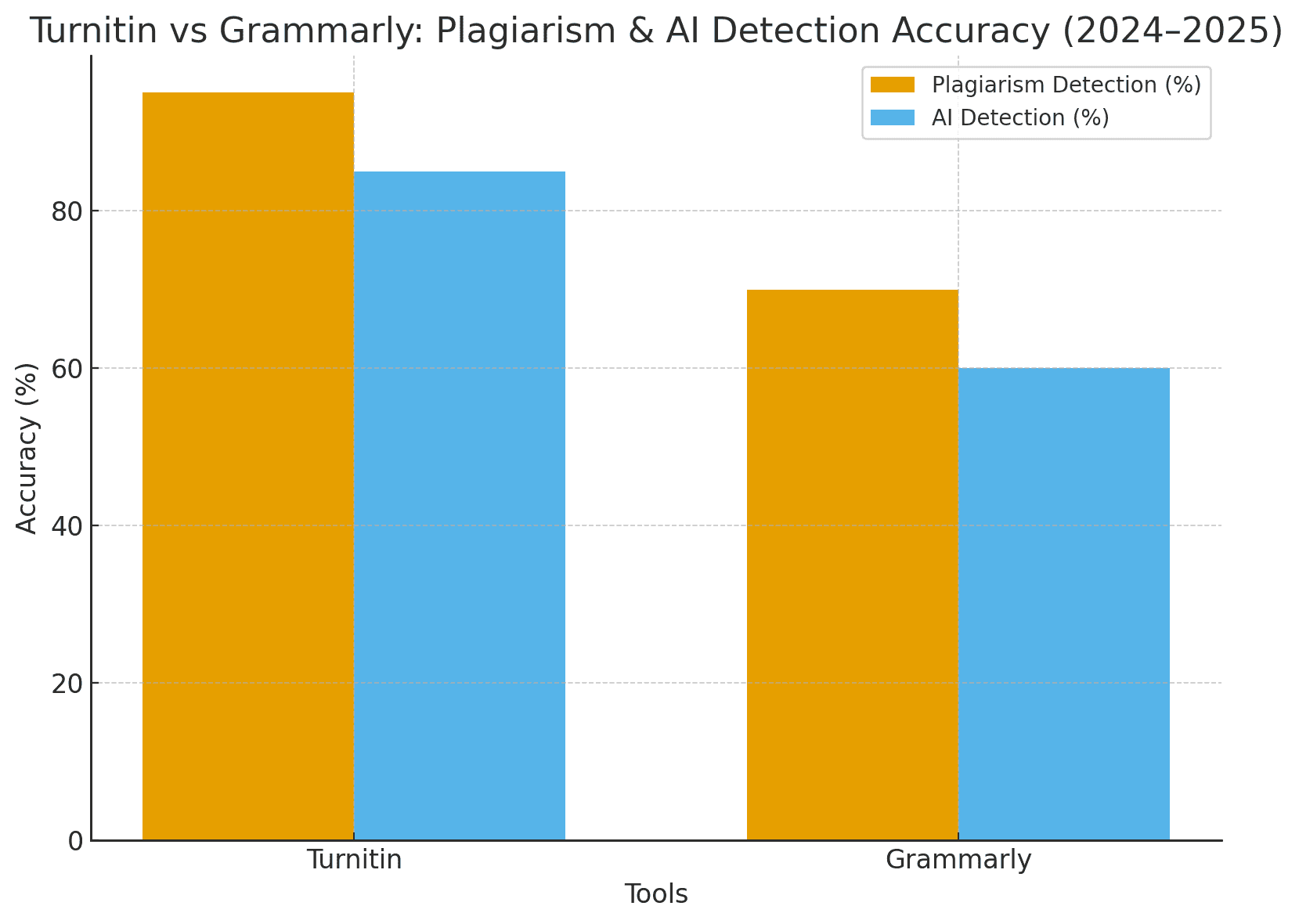As someone who’s spent the past few years helping students and educators navigate AI tools in academia, I often get asked: “Should I trust Grammarly or Turnitin?” These two platforms are often seen as competing tools, but the reality is more nuanced. They serve different needs: one (Grammarly) is designed as a writing assistant, the other (Turnitin) is a gatekeeper for academic integrity. But now that both have entered the AI detection game, the question has shifted from “Which one corrects grammar better?” to “Which one can actually spot AI-generated text and plagiarism?” The challenge is that AI detection tools often fail at different content types, making this comparison even more complex. Let's see what each tool offers, where they overlap, and where they fall short.
Does Turnitin Detect Grammarly AI?
This is a common question most learners ask when experimenting with paraphrasing tools like Grammarly’s generative AI feature. You might wonder: can Grammarly be detected as AI? Or can Turnitin detect Grammarly paraphrasing?
The short answer is: yes, Turnitin can sometimes detect when content has been significantly rewritten using AI tools like Grammarly. But not always. Grammarly’s AI paraphrasing tends to polish and clarify, rather than completely rewrite with a new structure or tone. That means the underlying semantics (what the sentence means) often remain unchanged. And Turnitin, using semantic analysis, can sometimes pick up on these traces. If you take an original source, plug it into Grammarly, and copy-paste the result into your essay without citing, you’re still at risk.
That said, Grammarly-generated content is far less detectable than outputs from more advanced generators like ChatGPT or Jasper. Turnitin's AI detector is more likely to flag obviously robotic patterns: repetitive structure, formulaic phrasing, and non-human logic flow. Grammarly edits tend to retain a human tone, so they're harder to flag outright.

But this doesn't mean Grammarly is safe from detection. As more students use the same AI suggestions, certain phrase patterns may start to accumulate in Turnitin’s database, which includes millions of student papers. If you and 30 others use the same sentence restructure from Grammarly, that pattern becomes part of Turnitin's “known content,” making detection more likely over time.
Who’s Better in Plagiarism Detection?
Let’s put the big question on the table: is Grammarly as good as Turnitin in plagiarism detection?

In most academic settings, Turnitin is still considered the gold standard. Its access to student paper repositories, institutional databases, and academic publications is unmatched. Turnitin doesn’t just compare your work to public internet content; it also checks against submitted student work from thousands of schools worldwide. That’s a massive advantage when detecting recycled or shared essays.
Grammarly, while improving, primarily compares your text to publicly available web pages and a limited set of academic articles through its ProQuest integration. It’s helpful for casual writing, personal blogs, or business content, but in academic contexts, it can miss critical overlaps, especially paraphrased ones.
I've seen it firsthand: a student ran their paper through Grammarly and got a low similarity score. But when submitted to Turnitin, the result jumped to 28%. Why? Because Grammarly couldn’t access the same archived dissertations and coursework Turnitin did. If your professor is using Turnitin, Grammarly’s plagiarism checker won’t offer complete peace of mind.
AI Detection Accuracy
Now, it’s important to understand what’s quickly becoming the new standard in academic evaluation and see how accurate Grammarly AI detection is compared to Turnitin.
Grammarly introduced its AI detection feature relatively recently. It tries to spot whether your text “sounds like AI” by analyzing sentence patterns, vocabulary balance, and style predictability. It gives a simple percentage score and sometimes highlights which sections appear robotic. It’s useful for quick self-checks, especially for essays or personal writing.
But in terms of precision, Grammarly’s AI detection isn’t nearly as robust as Turnitin’s. Turnitin’s AI detector, launched in 2023, was built on years of semantic AI research and academic writing samples. It goes deeper: not just sentence structure but logic, burstiness, and coherence flow. That’s why it's more likely to flag ChatGPT-style writing, even when it’s been lightly edited.
Turnitin vs. Grammarly: Key Academic Usage Metrics
Here's comparative table for both tools to understand their differences better:
| Metric | Turnitin | Grammarly |
| Plagiarism Detection Scope | hecks student paper repositories (global), institutional archives, published academic works. | Checks primarily web content + limited academic sources via ProQuest |
| AI Detection Accuracy | 85% in detecting AI-generated or AI-assisted academic text | 60% for detecting robotic phrasing or style shifts; less reliable for deep semantic clues. |
| False Positive Rate | Reported less 1% in large full-document analysis | Higher chance of misflagging tone or style as AI |
| Student Use | Widely used and required at many universities. | Common in everyday writing tasks as a grammar checker |
| Best Use Case Outside Academia | Difficult to use directly for free; proxies needed. | Excellent for grammar and style improvements and quick self-checks |
Is Turnitin Reliable for AI Detection?
In many cases, yes, but not always. While Turnitin leads in detection coverage and context analysis, it isn’t perfect. I've reviewed reports that flagged entire essays with high AI scores simply because the student wrote in a structured, polished manner. Academic writing, by nature, tends to resemble AI in clarity and logic. So, while Turnitin is powerful, its AI detection is still maturing and can overflag honest work.
That’s where alternative tools come in.
If you’re a student worried about how your AI-assisted writing will be perceived, tools like JustDone’s AI Detector can offer an interesting middle ground. Unlike Grammarly’s basic scoring or Turnitin’s institutional interface, JustDone gives a more nuanced explanation of why text might be flagged. It breaks down linguistic cues and helps students revise, not just redact, questionable content.
How Good Is Grammarly in AI Detection?
Grammarly’s AI checker feels like a light safety net. It won’t penalize you for using AI, but it may give you a sense of whether your text is too robotic. I recommend it for tone-sensitive writing like job applications or SOPs, where sounding personal is essential. But I wouldn’t rely on it for serious academic assignments. It lacks depth and doesn’t explain its reasoning, which makes it harder for students to learn from the results.
That’s why I recommend using some alternatives like JustDone. Made with advanced NLP technologies on the basis, it wins the game with AI content detection now.
Conclusion about Turnitin vs Grammarly
In the battle of Turnitin vs Grammarly, there’s no one-size-fits-all winner. Turnitin is still unmatched when it comes to formal plagiarism detection and deep AI content scanning, especially in the academic world. But it's less accessible for everyday use and can be intimidating for students without proper guidance.
Grammarly, on the other hand, is good at improving your writing in real time. It’s user-friendly, integrates well into daily tasks, and gives fast feedback. But it doesn’t go deep enough when it comes to academic standards or advanced AI detection.
That’s why tools like JustDone’s AI Checker are worth watching. For students who work with AI but still want to learn, revise, and preserve their own voice, JustDone offers that educational layer. It helps not just scan your text, but also understand why it might look AI-written or plagiarized, and how to make it your own again.
So if you're serious about getting ahead, try combining these tools. Let Turnitin keep you in check, let Grammarly polish your style, and let JustDone help you understand the balance between originality and AI assistance. That’s the real future of academic writing.